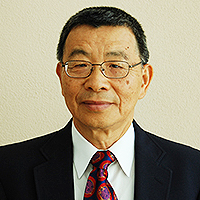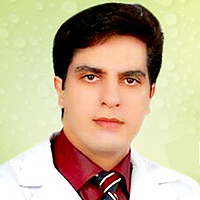The application of therapeutic exercise as a means of rehabilitation in a patient diagnosed with MS, Case Study
Published on: 5th December, 2022
Multiple Sclerosis (MS) is a chronic and often progressive condition that affects the Central Nervous System (CNS) and as a result has negative consequences on a person’s physical condition, functioning, mood, and Activities of Daily Living (ADL) [1].
Postpartum as the best time for physical recovery and health care
Published on: 2nd January, 2023
Aim: The current paper presents a subjective symptom survey regarding postpartum discomfort (Study 1) and a case study on postpartum care using the program developed based on the survey results (Study 2). Thereafter, health care during the postpartum period is discussed.Methods: Study 1 analyzed 1638 postpartum women who completed the Subjective Fatigue Symptom Scale (SFSS) over the period from June 2012 to December 2019. Study 2 detailed the case of a 33-year-old primiparous woman who answered questions regarding the rehabilitation care program.Results: The 1638 subjects included in Study 1 had a mean age of 32.4 ± 8.2 years and a mean postpartum duration of 4.3 ± 2.3 months. Subjective symptoms included lower back pain, shoulder stiffness, sleepiness, wanting to lie down, yawing, and eye strain. The case included in Study 2 showed certain psychological and physical changes following the exercise program. The results of Study 1 showed that motor system discomfort, such as stiff shoulders and lower back pain, occurred in women across all postpartum stages. Our results demonstrated that care and exercise geared toward improving motor system function are imperative after childbirth. Meanwhile, the results of Study 2 imply that our rehabilitation program based on postpartum physical conditions had positive psychological and physical effects.Conclusion: Taken together, our results suggest that continuing rehabilitative care based on the physical condition during each postpartum stage facilitates improvement in mothers’ physical and psychological discomfort.
Effectiveness of physical rehabilitation on sphygmography and blood pressure
Published on: 9th January, 2023
Cardiovascular Diseases (CVD) have become the leading cause of death worldwide: for no other reason as many people die every year from CVD. This problem affects low and middle-income countries to varying degrees. More than 80% of deaths from CVD occur in these countries, almost equally among men and women, however, patients who survived after Myocardial Infarction (MI) are at high risk of death. According to the main facts of the WHO, 17.9 million people died from CVD in 2016, which accounted for 31% of all deaths in the world. In this connection, it is necessary to improve medical rehabilitation and physical rehabilitation, in particular for CVD, especially on an outpatient basis. Competent physical rehabilitation and cardiac rehabilitation in patients with myocardial infarction are associated with improved survival and effectiveness of quality of life, as well as prevention of recurrent MI. There is a legislative framework FZ-No. 323 of 21.11.2011 “On the basics of health protection of citizens in the Russian Federation” concerning medical rehabilitation and “Procedure for organizing medical rehabilitation” No. 1705n of 29.12.2012.This study shows physical rehabilitation methods of health path and Nordic walking. Terrenkur is a method of sanatorium-and-spa treatment, which provides for dosed physical activity in the form of walking tours (5 km - 6 km daily at 12.00 - 13.00). Nordic walking - walking with sticks, a type of physical activity that uses a certain training methodology and walking technique with the help of specially designed sticks (5 km - 6 km daily at 12.00 - 13.00).Multiple meta-analyses showed that Cardiovascular Rehabilitation (CVR) reduces mortality in patients with coronary artery disease. Despite the recommendations and recommendations for the use of programs for patients with previous MI, patient participation in these programs remains low, which has led to the development of alternative models of medical rehabilitation.
Community, health and rehabilitation
Published on: 14th February, 2023
The problems of guaranteeing the best possible social and health services in every part of the world to combat any form of disability and limitation of participation for all, as indicated by international ethical-political documents, are still very great. A critical point that could favour this progress is to enhance the integration between the growing potential of rehabilitation science (medical and clinical evidence, technologies, and training of numerous operators..) and the ability of communities as a whole to stimulate, support and qualify these interventions with the participation of citizens (families, neighbours and associations) who can voluntarily actively carry out important synergistic actions in many fields. This could develop in any socio-economic condition; in developed ones supporting and finalizing any treatment in common life and in developing countries offering competencies and knowledge to the strong funding actions of community projects aimed at populations with disabilities in this part of the World. The community of rehabilitation professionals, national governments and rulers, and international institutions (UN, WHO..) must well understand this aspect and make it their own in training, in the definition of care protocols, in the definition of the organization of socio-health and rehabilitation systems in each country in relation to the different local economic and cultural conditions.
Effects of exercise on wall shear stress in male and female patients with coronary heart disease
Published on: 21st April, 2023
Coronary heart disease (CHD) seriously endangers human health, and there are obvious gender differences in incidence rate and prognosis, which are related to the evident differences in anatomical structure, physiological characteristics, and wall shear stress between males and females. In recent years, cardiac rehabilitation has been proven to be safe and effective in controlling the progression and improving the prognosis of CHD. Thereinto, exercise therapy is the central link of cardiac rehabilitation. Exercise can significantly affect vascular endothelial function by regulating wall shear stress. Based on previous research, this paper will briefly review the influence of exercise on wall shear stress in male and female patients with CHD, in order to provide a reference for formulating personalized cardiac rehabilitation programs and further improve the prognosis of CHD.
Single brain metastasis as onset of stage I endometrial carcinoma in patient affected by multiple sclerosis: the first case in literature
Published on: 25th April, 2023
Brain metastases in any gynecological cancer are a rare occurrence. Even more so, it is extremely rare for a gynecological malignancy to manifest itself with symptoms indicative of cerebral involvement. Literature regarding the association between MS and cancer is conflicting. We herein report a rare presentation of single metastasis of endometrial carcinoma in a 59-year-old woman affected by Primary Progressive Multiple Sclerosis (PPMS). A head CT scan was performed, which revealed the presence of an expansive lesion in the left parietal region. After careful assessment, a high-grade endometrial carcinoma was diagnosed and a decision was made to remove both the primary lesion and the brain metastasis in one sitting, through a conjoined surgery session involving neurosurgeons and gynecologists. The postoperative course was free from complications up until a few days after being transferred to a rehabilitation center, where she died following respiratory complications.
Eye Banking a Boon in Eye Health Care Services and Vision Restoration and Corneal Tattooing for Aesthetic Purposes
Published on: 20th June, 2023
Eye donation and eye banking are a boon in eye health care services for visual rehabilitation and corneal tattooing aesthetic purpose in post-trauma corneal opacities.A young female reported to our hospital with a complaint of corneal opacity and difficulty in closing her left eye. On examination, she was diagnosed with a “Corneal scar with an Inadvertent bleb”. The patient reported a history of corneoscleral injury for more than four years. A slit lamp examination showed a corneal scar with a micro leak at the inferotemporal scleral region.
An Individual Rehabilitation and/or Habilitation Program for Children with Disabilities (IPRH)
Published on: 23rd January, 2024
Introduction: The individual program of rehabilitation and (or) habilitation of children with disabilities (IPRH) is mandatory for execution by the relevant state authorities, local self-government bodies, as well as organizations regardless of organizational-legal forms and forms of ownership.Objective: To conduct a pilot analysis of the implementation of the IPRH contingent of patients of children with disabilities in an urban children’s clinic.Patients and methods: There were 366 reports on the implementation of measures provided for by an IPRH for a disabled person (disabled child) of 222 disabled. The organization of the study was in the nature of a continuous sample. The criterion for the inclusion of patients in it was the passage of an IPRH in a disabled child within a specified time frame. The following techniques were used: grouping, absolute and relative values, average values, detailing, and generalization. The threshold error probability for statistically significant differences was set at a level of 0.05.Results: The structure of the results of the control of the performance of IPRH in 222 disabled children according to the classes of diseases that caused the onset of disability (ICD) was as follows 1) G00-G99 - 35.47 ± 3.13%; 2) Q00-Q99 - 23.50 ± 2.77%; 3) 11.11 ± 2.05%; 4) C00-D48 - 10.25 ± 1.98%; 5) H60-H95 - 7.26 ± 1.67%; 6) M00-M99 - 2.99 ± 1.11%; 7-8) H00-H59 and P00-P96 - 2.14 ± 0.95%; 9-10) K00-K93 and S00-T98 - 1.29 ± 0.74% each; 11-12) I00-I99 and N00-N99 - 0.85 ± 0.60% each; 13-14) J00-J99 and L00-L99 - 0.43 ± 0.42% each.Conclusion: 1. In the structure of IPRH in 222 disabled children, according to the classes of diseases that caused disability (ICD), the following prevailed: 1) VI Diseases of the nervous system G00-G99 – 35.47%; 2) XVII Congenital anomalies, chromosomal disorders Q00-Q99 - 23.50%; 3) IV Diseases of the endocrine system, nutritional disorders, and metabolic disorders E00-E90 – 11.11%; 4) II Neoplasms C00-D48 - 10.25%; 5) VIII Diseases of the ear and mastoid process H60-H95 - 7.26%; 6) XIII Diseases of the musculoskeletal system and connective tissue M00-M99 - 2.99%; 7-8) VIII Diseases of the ear and mastoid process H60-H95 and VII Diseases of the eye and its adnexa H00-H59 - 2.14% each.2. The effectiveness of medical rehabilitation of disabled children was as follows: 1) Improvement - 23.26%; 2) Stabilization - 74.88%; 3) Deterioration - 1.86%. Dynamic observation was carried out on 94.26% of disabled children, drug therapy - 77.32%, non-drug therapy - 66.93%, and other types of medical rehabilitation were received by 14.48% of patients. Reconstructive operations were performed on 11.26% of disabled children.3. Prosthetics and orthotics were performed on 38.74% of disabled children. 32.43% of disabled children in need received sanatorium treatment, and 30.18% are currently in line to receive a voucher. For various reasons, 24.32% refused this type of rehabilitation; 3.60% of patients had contraindications at the time the voucher was provided.4. The obtained research results become the initial everyday statistical tool for objectifying the process of rehabilitation of patients and determining the strength and means of a medical institution to monitor and successfully implement an individual rehabilitation/habilitation program for a disabled person.
Case Report: An Elusive Case of Septic Arthritis
Published on: 2nd May, 2024
Septic arthritis is a serious inflammatory infectious state of the joint secondary to microbial infection. In the pediatric population the most common route of infection is haematogenous spread. Less than fifty percent of patients with septic arthritis will yield positive culture results with a mortality rate of up to 42% in some cases. Due to the challenge in obtaining culture and identification of the causative organism the management of septic arthritis has been more of empirical in nature with the chosen antibiotic synchronized with the epidemiological data. Here is a case of a 14 months old female patient presenting at our hospital with a left knee and lower thigh swelling for three days with failure to bare weight on the limb. In addition, she had fever and diarrhea for three days. Upon evaluation clinical, laboratory and radiological findings supported septic arthritis expect for her blood, pus and synovial fluid culture of which all came back negative. She had poor response to intravenous ceftriaxone, gentamycin, metronidazole, ampicillin- cloxacillin and amoxicillin clavunate. Over the course of therapy, she developed septic shock, severe anemia and acute liver failure and was admitted to the intensive care unit. Afterwards she was initiated vancomycin and developed a hypersensitivity reaction with generalized edema which prompted cessation of the drug. Due to her critical state and poor response a triple therapy regimen composing of meropenem, ciprofloxacin and metronidazole was selected and maintained for three weeks followed by an oral clindamycin course for another three weeks of which she responded. In addition, surgical debridement arthrotomy, irrigation and drainage were done. Physiotherapy for rehabilitation is ongoing with patient recovering well.
The Impact of Telerehabilitation on Physical Therapy Services in Rural Communities
Published on: 3rd May, 2024
Telerehabilitation is a transformative approach to physical therapy, revolutionizing the accessibility of healthcare in rural communities through the strategic use of Telecommunications technology. This novel approach has the potential to significantly enhance the efficacy of healthcare delivery, particularly considering the critical challenges posed by geographical isolation and resource scarcity. This paper explores the multifaceted benefits of Telerehabilitation, including increased access to care and reduced costs, alongside the challenges of technological barriers and privacy considerations. It provides a comprehensive overview of Telerehabilitation’s impact on rural healthcare, emphasizing its capacity to optimize patient outcomes and proposing strategies for effective implementation. The findings of this study suggest that the use of technology to deliver telecare is a key means of delivering equitable healthcare to underserved populations, a promising way to improve access to rural physiotherapy services address the challenge of telehealth resources, and promote the long-term sustainability of rural Telerehabilitation practices.
Effects of Physiotherapy Care in the Postoperative of Total Hip Arthroplasty: An Integrative Review
Published on: 11th June, 2024
Introduction: Total hip arthroplasty is a procedure widely performed in orthopedics, as it is capable of restoring function in the hips, severely affected by orthopedic diseases, such as osteoarthritis and consequently reducing pain and restoring function. Objective: To identify the effects of physical therapy in the postoperative period of total hip arthroplasty. Method: This is an integrative review, of an exploratory and descriptive nature, carried out between January and May 2024 and guided by the recommendations of the Joanna Brigs Institute. The Pubmed, LILACS, and SciELO databases were used. The following descriptors were used for the search procedure: “Physiotherapy and hip arthroplasty”. For the operationalization of the search, the Boolean descriptor “AND” was used to cross the descriptors. Articles were included in randomized clinical trials, published in full, without restriction of language and/or year of publication, which dealt with the theme addressed and that responded to the objective of the study. On the other hand, editorial letters, any type of literature review, articles unavailable at the time of search, abstracts and/or full articles published in annals of scientific events, preprints, and articles without abstracts were excluded. Results: After searches in the databases, 108 articles were identified on the platforms, subsequently, all had their titles and abstracts read, then 58 articles were excluded for not meeting the eligibility criteria, leaving 50 articles carefully read in full, after complete reading, only 7 articles composed the final sample. Final considerations: based on the reading and analysis of the articles that were previously selected, it was observed that there is no pre-established protocol among the authors for the postoperative period of hip arthroplasty, but that physical therapy techniques associated with therapist support and an early start are responsible for improving functionality, quality of life, pain reduction and increased muscle strength.
Exploring Dermatofunctional Perspectives beyond Aesthetics: An Integrative Literature Review
Published on: 21st June, 2024
Introduction: Dermatofunctional Physiotherapy is an area of physiotherapeutic specialty that aims to promote, prevent, and treat integumentary injuries. However, this field of action is usually erroneously limited to aesthetic and cosmetic procedures. However, the scope of Physical Therapy goes beyond aesthetic procedures. Objective: To identify the scope of dermatofunctional physiotherapy beyond aesthetics. Methodology: This is an integrative literature review with the objective of summarizing and exploring the proposed theme. For this, the PRISMA guidelines were used, as well as the PICOT strategy for a better delineation of the research question and research theme. Results and discussions: It was observed that the role of the physiotherapist in this field is directly related to aesthetics, which is one of the most prosperous segments within the health area, due to the great demand for aesthetic procedures. Among the main resources evidenced in this study, lymphatic drainage, electrothermophototherapeutic resources, myofascial release, and manual techniques were observed. Final considerations: The area of physical therapy is not exclusively dedicated to the aesthetic environment, it was observed that this specialty acts strongly in the promotion, and prevention of rehabilitation of patients with metabolic, integumentary, and musculoskeletal alterations, in addition to promoting and preventing diseases related to obesity, scars, geloid edema, flaccidity, and other integumentary dysfunctions.
Improvement of the Cognitive Abilities in a Chronic Generalized Anxiety Disorder and Moderate Depression Case using a Novel Integrated Approach: The Cognitome Program
Published on: 1st July, 2024
Cognitive impairment has been increasingly observed among patients with anxiety disorders and major depressive disorders impacting their normal daily functioning as well as quality of life. A multitude of evidence suggests that the most affected cognitive abilities are memory, attention, perception, and executive functioning in patients with anxiety and depression. Impairment in these higher-order cognitive functions can be attributed to age, education, diet, hormonal changes, stress, and prolonged use of drugs/alcohol/ medicines. To address the issues related to cognitive impairment various non-pharmacological therapeutic modalities such as Cognitive remediation approaches viz; cognitive rehabilitation, cognitive stimulation, and cognitive training; Audio-visual entrainment; mindfulness-based interventions; and neurofeedback have come into play in recent years. It is imperative to understand that the ability to test, measure, and monitor cognitive performance along with implementing cognitive remediation approaches viz; cognitive stimulation, cognitive training, etc. across the lifespan helps in early identification, accessing treatments faster, staying healthy for longer, and improving overall quality of life. This article discusses a case study of a client suffering from generalized anxiety disorder and moderate depression who after undergoing and following a novel therapeutic approach, ‘The Cognitome Program’ has shown credible improvement in cognitive abilities, along with a prominent reduction in the symptoms of anxiety, depression, and better psychological and physical well-being. Guided by the concept of neuroplasticity and cognitive plasticity, our innovative neuroscientific holistic program- ‘The Cognitome Program’ empowers unlocking hidden cognitive potential using cutting-edge methodologies and personalized strategies.
Improving Cardiac Rehabilitation Referral Rates in Patients with Coronary Heart Disease from Diverse Communities Using an Electronic Order System
Published on: 29th June, 2024
Introduction: Despite the benefits of Cardiac Rehabilitation (CR), local and national CR referral and participation rates remain low when compared to established cardiovascular therapies, especially amongst racial/ethnic groups. Objectives: This study investigated the effects of the implementation of a CR program and electronic order set (EOS) in a large health system on CR referral and participation rates among a diverse group of patients with Coronary Heart Disease (CHD). Methods: A total of 360 patients from UCSD Health who presented with ACS were prospectively evaluated during initial hospitalization and 6- and 12-weeks post-discharge. The multivariable logistic regression model assessed referral and participation rates by week 1 and -12 post-discharge, adjusting for gender, age, race, ethnicity, geography, and referring physician subspecialty. Results: UCSD CR program implementation led referral rates to increase at week 1 (Pre- 38.6% and Post-54.9%, p = 0.003) and week-12 (Pre- 54.1% and Post- 59.8%, p = 0.386). Post-CR referrals were more likely at week-1 (OR: 1.93, 95% CI 1.27-2.95) and week-12 (OR: 1.26, 95% CI 0.79-2.00). EOS implementation increased referral rates at week-1 (Pre- 40.3% and Post- 58.7%, p < 0.001) and week-12 (Pre- 54.9% and Post- 60.4%, p = 0.394) with referrals more likely at week-1 (OR: 2.1, 95% CI 1.35-3.29) and week-12 (OR: 1.25, 95% CI 0.795-1.98). Participation in CR following EOS was more likely at both week-1 and week-12. Multivariable analysis revealed disparities in referral based on race, geographic location, and referring physician subspecialty. Conclusion: A CR program and EOS implementation were shown to increase referral rates with long-term potential for increasing referral and participation rates. Condensed abstract: This prospective study investigated the implementation of a Cardiac Rehabilitation (CR) program and Electronic Order Set (EOS) within the same health system on CR referral and participation rates. 360 patients with ACS were evaluated over 12 weeks. UCSD CR program and EOS implementation led referral rates to increase at week-1 and -12. CR participation was more likely to increase at week-1 and -12 following EOS. Multivariable analysis revealed disparities in referrals disproportionally affecting racial and ethnic minority groups and rural communities. CR and EOS implementation may increase CR referral rates for diverse patients with CHD.
Development and Evaluation of a mHealth app - (ReMiT-MS app) for Rehabilitation of Individuals with Relapsing-remitting Multiple Sclerosis - A Mixed Methods, Pragmatic Randomized Controlled Trial - Study Protocol
Published on: 3rd July, 2024
Background: Delaying or slowing functional loss is a valuable goal of Multiple Sclerosis (MS) rehabilitation. The mHealth app-based exercise rehabilitation intervention is expected to overcome barriers related to routine care of MS. Due to the ubiquitous presence of smartphones, they offer an excellent opportunity for remote monitoring, scheduled interaction with experts, and instruction for exercise in a home environment. Challenges in MS routine care include forgotten rehabilitation steps, limited access to local MS experts, and internal barriers such as low health literacy, mobility limitations, and fatigue, alongside external obstacles like service availability and transport costs.Objectives: To develop a mHealth app that is user-centered and context-specific for rehabilitation of MS symptoms, and to evaluate its clinical and cost effectiveness in individuals with RRMS.Methods: The proposed research will be conducted in two phases; the first phase (Phase 1a) will be focused on the development of mHealth app content (ReMiT-MS app trial I). The pilot phase (Phase 1b), where a prototype of the application will be designed, and its usability will be evaluated. Finally, in the second phase (Phase 2), the clinical and cost-effectiveness of the ReMiT-MS app for the rehabilitation of individuals with RRMS will be evaluated (ReMiT-MS app trial II).Conclusion: The findings of this proposed trial may provide a telerehabilitation platform for individuals with RRMS in a resource-limited setting and establish a low-cost healthcare delivery model. In addition, the results of this research work might open a new window in healthcare delivery in India and similar settings.Trial registration: CTRI/2022/09/045266 [Registered on 06/09/2022]
Severe Alcoholic Hepatitis-optimizing Medical Management: Whether we need a Liver Transplant
Published on: 9th July, 2024
Severe alcoholic hepatitis is an ethical and clinical conundrum, wherein a liver transplant is often recommended. The adequacy of medical treatment versus the risk of recidivism after transplant is often debated. Complete recovery in 26 of 27 patients with severe alcoholic hepatitis was observed, and hence the data was retrospectively analysed.Methods: 27 patients, with severe alcoholic hepatitis, with Maddrey's discriminant function between 59.7 to 165.2 (mean 107.53), from June 2017 to May 2022, were followed up for between 11 months to 6 years. INR ranged from 1.99 to 3.7 (mean 2.709), and bilirubin was between 7.6 to 37.01, (mean 20.859). 8 patients had pre-existing liver cirrhosis. All patients received probiotics, nutritional support, physical rehabilitation, saturated fat (clarified butter/ desi ghee) supplementation, and anti-oxidant support. At 90 days, total bilirubin improved to between 1.0 to 6.8 (mean 2.625). ALT (Alanine Transaminase/ SGPT) ranged from 65 to 550 (mean ALT – 197); and AST (Aspartate Transaminase / SGOT) ranged from 58 to 810 (mean AST – 271.51). Both the AST and ALT were near normal after 90 days. One patient died due to bacterial pneumonia and sepsis; the remaining 26 patients made a complete recovery. All patients including those with diagnosed liver cirrhosis, had complete resolution of their ascites, and near-normal liver function. At the last outpatient visit, none had ascites, edema, or encephalopathy, and had normal albumin levels and INR values. Conclusion: Probiotics, nutrition, a saturated fat diet, and exercise; all have shown benefits in patients with severe alcoholic hepatitis when tested individually. Concomitant use of all the above has not been reported in the treatment of alcoholic hepatitis. The role of nutrition alone versus the contribution of nutritional deficiencies and the role of gut-derived endotoxemia need to be studied in detail. How to identify patients who need a transplant, if it is needed at all, remains a challenge.
Effect of Pulmonary Rehabilitation on Non-obstructive Disease Congenital Kyphoscoliosis Patient in Kuwait
Published on: 18th July, 2024
A case study of a non-COPD (Chronic Obstructive Pulmonary Disease) patient with congenital kyphoscoliosis to see the effect of pulmonary rehabilitation after 36 sessions given for chest disease in Kuwait with signs and symptoms, physical capacity, functional level, and Quality of life.
Enhancing Physiotherapy Outcomes with Photobiomodulation: A Comprehensive Review
Published on: 23rd July, 2024
Physiotherapy treatments employ complex approaches tailored to the patient’s diagnosis. Exercise is the primary strategy to enhance rehabilitation processes for most individuals. However, electrophysical agents, such as Photobiomodulation (PBM), that utilize specific wavelengths of light to penetrate tissues and stimulate cellular activity, can modulate various biological processes and may improve physiotherapy outcomes. This non-invasive treatment can reduce pain and inflammation, promote tissue repair, and accelerate tissue healing. Currently, PBM has numerous applications, including pain and inflammation treatment, wound healing (such as diabetic foot ulcers, pressure ulcers, post-surgery wounds, and skin grafts in burn injuries), and the management of musculoskeletal disorders (such as arthritis, tendinopathies, muscle injuries, and spinal disorders). It is also utilized to improve muscle performance and recovery in rehabilitation and sports. Additionally, transcranial PBM has shown promise in enhancing neurorehabilitative processes by facilitating the recovery of cognitive and motor functions in various types of lesions. The safety and efficacy of this treatment allow it to be incorporated alongside regular exercises and manual therapies as an adjunctive treatment, potentially enhancing outcomes in different areas of rehabilitation.
Physical Performance in the Overweight/Obesity Children Evaluation and Rehabilitation
Published on: 31st July, 2024
Introduction: Childhood obesity is one of the current themes of medical research, being considered not so much a multidimensional condition but primarily a real problem of worldwide interest.The aim of our randomized study was to evaluate and compare the effects of physical exercise associated with an educational program on clinical-functional status in overweight and obese children.Material and method: Participants were children hospitalized, through the emergency service, in the Pediatric Department, Craiova Municipal Clinical Hospital, between June and November 2023. 93 overweight and obese children, aged between 2 and 16 years, were evaluated (clinical, paraclinical and functional) by a multidisciplinary team and randomized into the control group (group C – 63 children) and the study group (group S – 30 children). After the resolution of the acute digestive or respiratory disease, the children in group S underwent a program to restore their functional status, based on educational measures (following the 5-2-1-0 rule) and physical exercises, for 12 weeks. Anthropometric data were measured (height, weight, body mass index); physical performance wasevaluated by gait analysis (we used the BTS G – WALK / BTS G – SENSOR 2 system, BTS Bioengineering Corp, Italy) with the determination of four parameters – the Timed Up-and-Go (TUG) test, the symmetry index, the walking test six minutes (6 MWT) and walking cadence or average cadence (steps/min) in both groups of children.The results were obtained by analyzing the differences in values obtained in the two moments T1 (initial) and T2 (after three months). The proportion of girls and boys was approximately equal within obesity class in each study group. Although we did not obtain statistically significant differences between the monitored parameters, between the two groups, for the two evaluation moments, the children in Group S had a clearly favorable evolution for physical performance parameters, whose average value was improved in T2. Anthropometric data did not change.Conclusion: The present study confirms the effectiveness of the multimodal (educational-kinetic) program for the physical performance of overweight/obese children. The sustained running of the program at home, with the involvement of the family and the school environment, is essential for the well-being of these children, with a favorable impact on the quality of life later.
Clinical Case of Successful Therapy for the Patient with Autism by use of Fetal Stem Cells
Published on: 19th August, 2024
More than 60 million persons all over the world are living with the diagnosis of “Autism”, in accordance with the UNO. According to the WHO, almost every hundredth child is a sufferer of ASD. Such figures emphasize globalization of the problem, and its impact not only on the child’s family but also on the economies of entire countries.Autism diagnosis is difficult and based on the general symptoms in kids. Today, the neuroimaging techniques (methods of functional Magnetic Resonance Imaging (MRI) and MRI tractography), Electroencephalography (EEG), evoked cognitive potentials and dynamic monitoring of the results help with an objective evaluation of stem cell therapy.Treatment options in modern pharmacology and rehabilitation psychotherapy for ASD kids are limited. Therapy methods do not ensure a full integration into social life and personality awareness. To alleviate likely problems in society, different therapeutic approaches exist that might reduce the manifestation of the various autism symptoms. FSC therapy is one such innovative method that has recently become enough popular.We inform about the clinical case of successful treatment using fetal stem cells for a child with autism followed by the period of 1-year follow-up showing significant clinical results. Over one year, the positive changes that had been proved by the ATEC questionnaire, the EEG results, and MRI-tractography were noted by the patient’s family. As emphasized in the clinical case report, fetal stem cell therapy is a promising and efficient treatment for children with autism. All that was sufficiently confirmed by the results acquired because we saw an overall improvement in this patient.
















